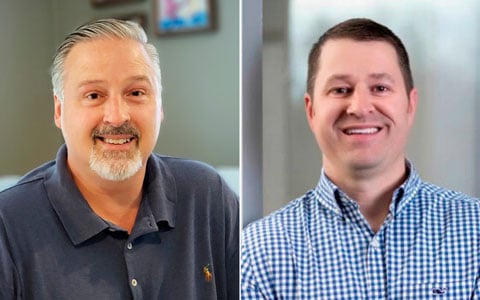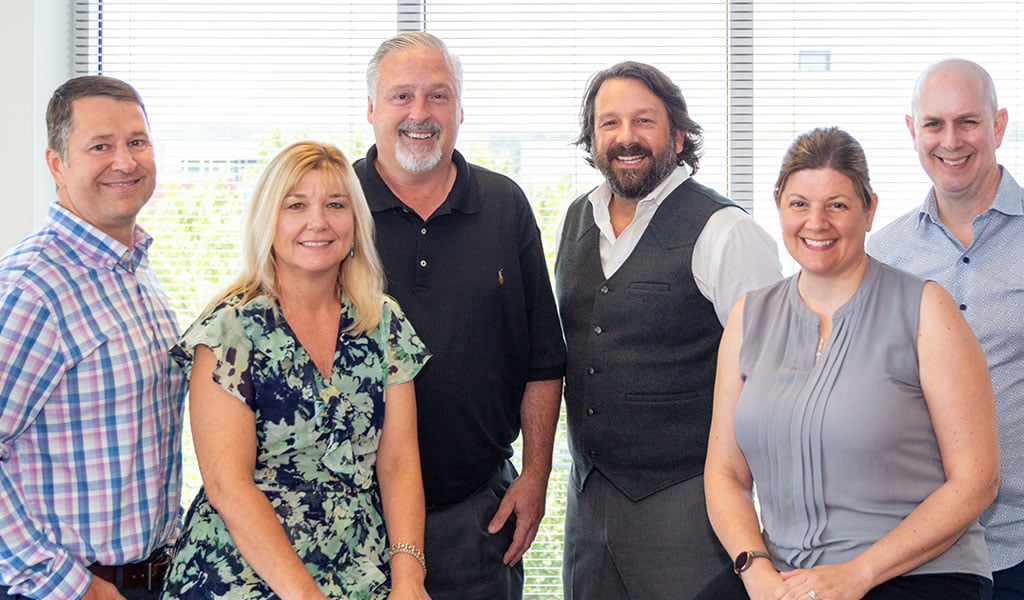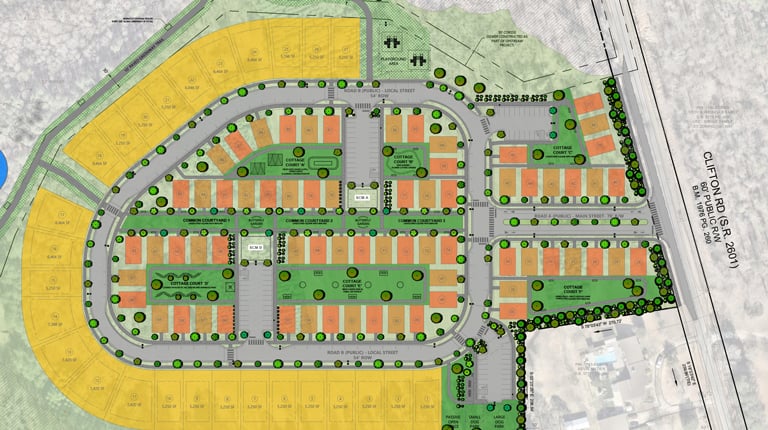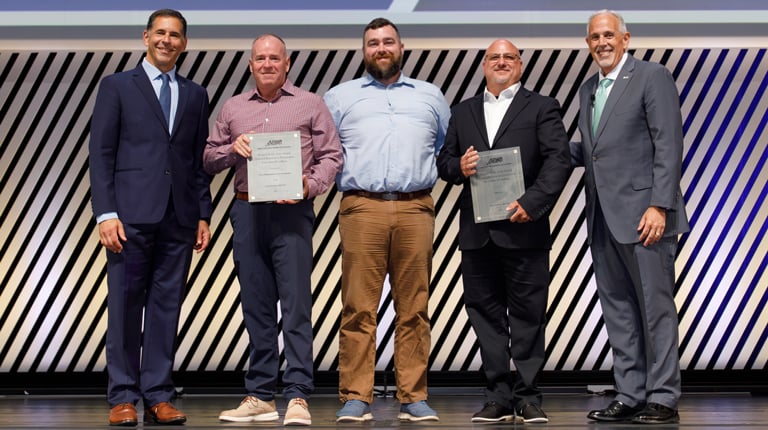
VHB's Energy Evolution Practice (EEP) is driving innovation and impact in an era marked by the demand for sustainable energy solutions. The practice is committed to partnering with clients and communities to meet their energy needs in a world that transcends net-zero emissions. We had the opportunity to speak with Rich Lewis, Director of Energy Engineering, and Stephen Quina, Mid-Atlantic Manager of Energy Engineering, to gain valuable insight into their experience as they navigate the ongoing energy transformation.
VHB: What experiences or projects led you to this role within VHB’s EEP?
Rich Lewis: Prior to joining VHB, I worked on large-scale natural gas transmission, district heating and cooling, and complex utility projects in Boston. I also have significant experience with investor-owned utility (IOU) clients—engineering upgrades to their electrical transmission, substation, and distribution assets. Combined, these experiences have led me to my current role, where I lead the integration of engineering services into energy projects, enhancing VHB’s ability to provide integrated consulting services to our clients.
Stephen Quina: My journey with renewable energy began in 2014 with projects like the Remington Solar Facility for Dominion Energy in Virginia. In 2017, I decided to dedicate myself professionally to renewable energy, which led me to VHB in late 2021. As part of the EEP at VHB, I guide clients through new energy advancements and permit, engineer, design, and construct sites that optimize production and minimize environmental impacts.

VHB: What is Energy Engineering? What services does your team offer to support clients with energy-focused projects?
Rich Lewis: Energy Engineering is a multidisciplinary endeavor focused on efficient energy production, conversion, distribution, and utilization. Our team combines civil, structural, mechanical, and electrical engineering with insights from natural sciences, economics, and environmental studies to deliver sustainable, cost-effective solutions to clients across VHB’s markets and footprint.
VHB’s in-depth understanding of geomatics and environmental permitting, coupled with our expanding engineering capabilities, differentiates VHB from other firms in terms of our ability to deliver integrated full-service solutions.
VHB: What is differentiating about VHB’s approach to energy projects?
Stephen Quina: A significant aspect of our approach is to identify and address potential risks early in the project lifecycle. We conduct site assessments and critical issue analyses to pinpoint constraints that could jeopardize a project. By doing this early, we help clients make informed decisions about whether to proceed or halt a project, potentially saving them substantial investments later on. Our goal is to inform clients of any site-specific issues so they can plan accordingly.
Our work also contributes to societal goals of reducing carbon emissions and combating climate change. By facilitating the development of renewable energy projects, we play a role in a larger movement toward sustainable energy solutions that benefit everyone. Our focus on early risk mitigation helps our clients and supports the overall success of renewable energy initiatives in the communities we serve.
VHB: How is the EEP leveraging technology to enhance the services provided to clients?
Rich Lewis: Core to our practice is the integration of technology. In our substation practice, we deploy model-based design, starting with a terrestrial lidar scan and culminating in an intelligent 3D model. This approach has become an invaluable asset to our IOU clients with proposed substation projects, as we're able to develop intelligent 3D designs for proposed facilities with challenging site conditions during the conceptual phase. This allows our clients to more easily understand issues with access and constructability, conflicts with the proposed facility, transmission and distribution connections, abutter impacts, land disturbance, and cost.
We also make the 3D model available in an AutoCAD Viewer, which allows non-civil practitioners to view or fly around the 3D model, which is set into the existing landscape—providing an understanding and perspective not found on a 2D plan. By approaching projects in this fashion, our team takes a sustainable approach to project development, taking into account the triple bottom line (TBL) during the conceptual phase.
VHB: Are there any exciting project opportunities on the horizon?
Stephen Quina: As a partner in the Highlands Solar project, I’m excited to be part of this groundbreaking initiative and the similar energy projects it may lead to in Virginia and beyond.
The collaboration between The Nature Conservancy and Dominion Energy Virginia to develop one of the first utility-scale solar projects on former surface mines in Southwest Virginia is a testament to innovative thinking and sustainable development.
The project's scope is impressive, repurposing approximately 1,200 acres of the former Red Onion surface mine and surrounding properties. The Highlands Solar project will be able to power 12,500 homes at peak output. This will contribute significantly to Virginia's clean energy while bringing huge economic benefits to the region, like increased tax revenues and job creation.
From an engineering perspective, this project presents unique challenges and opportunities. Repurposing former coal mines for solar development requires very careful planning and innovative solutions to address site-specific issues. We'll be breaking new ground in sustainable land use and renewable energy integration, and the potential to replicate this model in other regions across the U.S. makes the work even more exciting and impactful.
It's truly inspiring to witness the industry's growth in real-time and feel excited about the future opportunities it holds.
VHB: How do you see the AEC industry shifting around sustainability and energy-related services in the future? How will your team contribute to this shift?
Rich Lewis: Clients in traditionally non-energy markets are now considering their energy needs relative to developing sustainable, net-positive solutions for their projects. VHB’s knowledge of the evolving regulations and funding mechanisms coupled with our understanding of emerging technologies and renewable energies allows our EEP to partner with VHB colleagues across markets to help their clients realize their clean energy goals.
Stephen Quina: The shift towards sustainability in the AEC industry is partially driven by the growing recognition of climate change and the need for carbon neutrality. Companies like Google, Amazon, and others have set ambitious goals to reduce their carbon footprints, prompting a broader industry movement toward renewable energy solutions.
We’re contributing to the shift by identifying and developing renewable energy sites that optimize energy efficiency. We’re also accommodating electric vehicle (EV) infrastructure and planning for on-site solar energy generation to help clients meet their energy goals. VHB emphasizes the importance of smart building technologies that allow for better energy management, which can lead to substantial cost savings. As sustainability becomes increasingly vital, our efforts align with the industry's broader movement toward reducing carbon footprints and enhancing energy resilience.
VHB: Why are you passionate about energy and sustainability?
Rich Lewis: Transitioning to a sustainable, clean energy portfolio for our planet is the single greatest challenge facing humanity this century, and we owe it to all who will follow to take some corrective steps right now. After all, like VHB, planet Earth is generational. With any large task or goal, such as carbon neutrality, success is not achieved in one fell swoop but instead through a series of smaller successes that culminate in the desired outcome.
As a member of VHB and our EEP, I want to assist our clients in realizing their net-zero goals by helping them take positive steps toward clean energy and provide sustainable, environmentally sensitive, socially and economically responsible, integrated energy solutions at every step of the project.
Help Shape the Future of Energy
With a dedicated team leveraging cutting-edge technologies and a commitment to impactful projects, VHB is shaping the future of energy. If you’re passionate about the field and mission, join VHB’s Energy Evolution Practice to help transform the industry and take hold of the exciting opportunities ahead.


